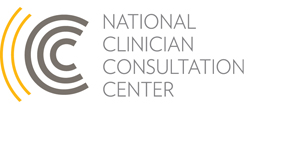Case of the Month: PEP Management and Kidney Disease
Case Summary
The Clinician Consultation Center received a call from an occupational health provider caring for a physician who had just been stuck with a needle used to perform an arthrocentesis on a known HIV-positive source patient (SP). The SP was taking combination antiretroviral therapy which consisted of co-formulated abacavir/lamivudine (Epzicom®) and efavirenz (Sustiva®).
The SP’s HIV viral load was 2,318 copies/mL from two months ago, and a recent hepatitis C antibody test was negative. The physician who sustained the needlestick had completed her hepatitis B vaccination series, with a documented serologic response indicating adequate immunity (i.e. HBsAb ≥ 10 mIU/mL). She also had a history of chronic hypertension with a recent creatinine clearance estimated at 50 mL/min. The occupational health provider and exposed patient had discussed the various risks and benefits of HIV post-exposure prophylaxis (PEP), and were favoring PEP initiation. However, due to the decreased creatinine clearance, they wanted to inquire whether alternative PEP medications or dosing should be pursued.
CCC Consultant Response
Although overall risk of occupational transmission of HIV through a percutaneous exposure remains relatively low (most recent CDC estimate is ~0.23%), there may be compelling factors in this case to favor PEP, i.e. known HIV-positive source with detectable viremia and involvement of a hollow-bore needle. The currently recommended PEP regimen is co-formulated tenofovir/emtricitabine (Truvada®) once daily plus raltegravir (Isentress®) twice daily. However, co-formulated tenofovir/emtricitabine should not be initiated if baseline estimated creatinine clearance is < 60 mL/min. Tenofovir has been associated with renal toxicity among both HIV-infected and uninfected individuals; this is why baseline and repeat kidney function testing is recommended for all individuals who start PEP.
For the exposed physician in the case above who appears to have pre-existing kidney disease, initiation of tenofovir could potentially cause further decline in renal function and should be avoided if possible. In this case, an alternative PEP regimen would be recommended: co-formulated zidovudine/lamivudine (Combivir®) twice daily with raltegravir twice daily. For a baseline creatinine clearance of 50 mL/min, usual doses for both zidovudine and lamivudine could be administered (zidovudine dose adjustment would be recommended if creatinine clearance was < 15 mL/min; lamivudine dose adjustment would be recommended if creatinine clearance was < 50 mL/min). In addition to baseline and repeat metabolic panel testing, a baseline CBC should be drawn and repeated two weeks into the physician’s PEP course due to zidovudine exposure.
Because CCC consultations are based on information provided by the caller or clinician accessing the online consultation center, without the benefit of a direct evaluation or examination of the patient, consultations are intended to be used as a guide. They do not constitute medical advice and are not to serve as a substitute for medical judgment. This Case of the Month includes consultation based on the most up-to-date evidence at the time of its publication. To learn about current recommendations, please call one of our clinical consultation lines.
 University of California, San Francisco |
University of California, San Francisco |
